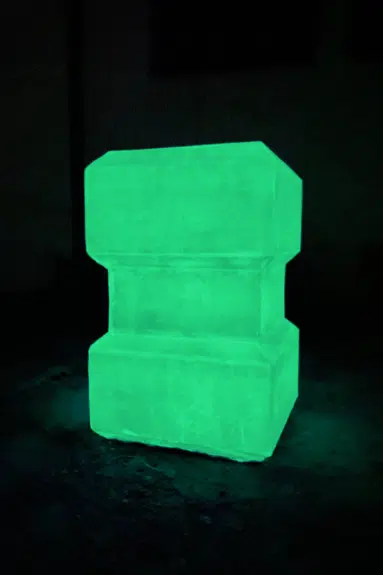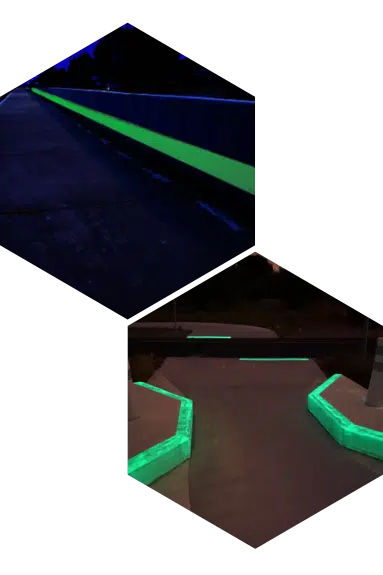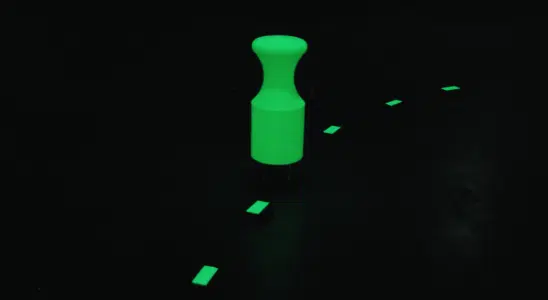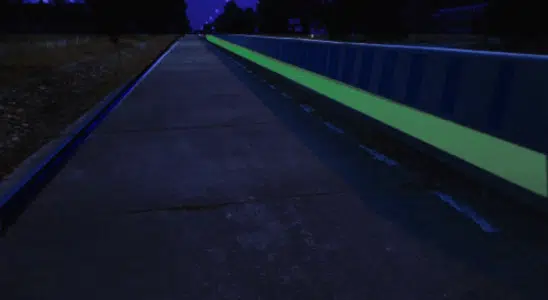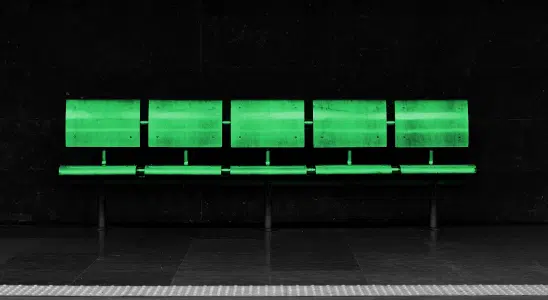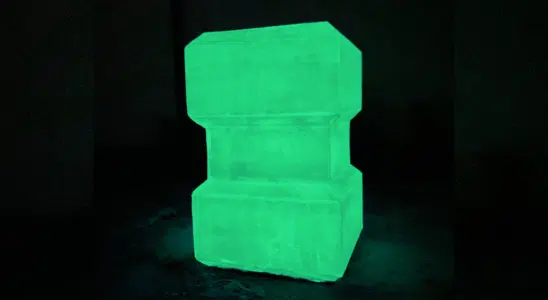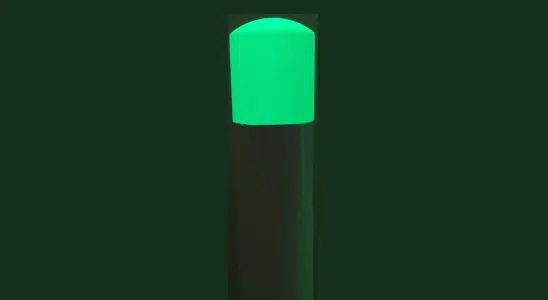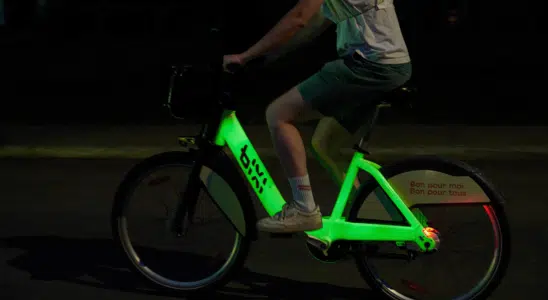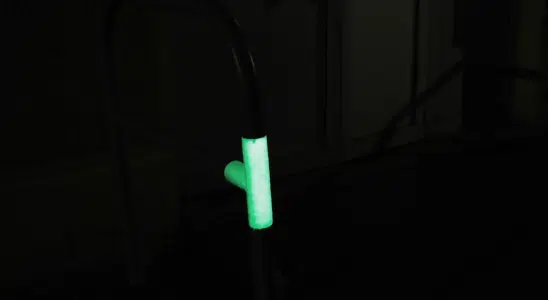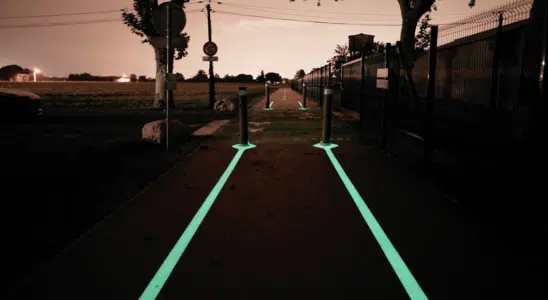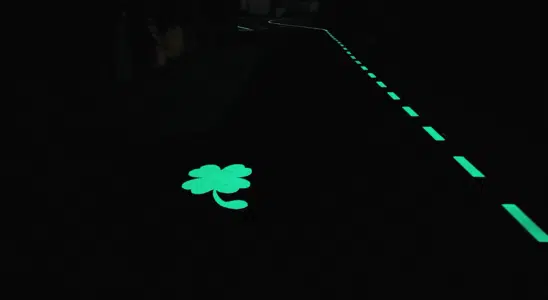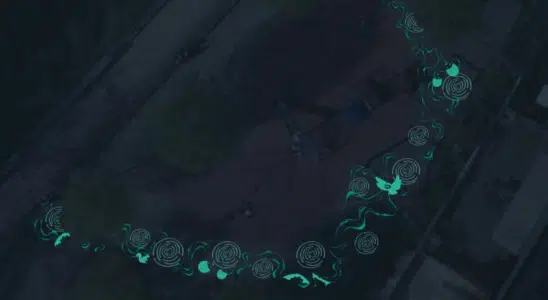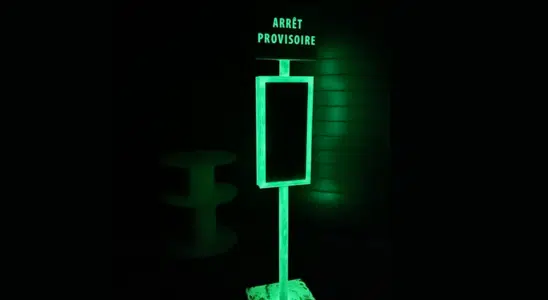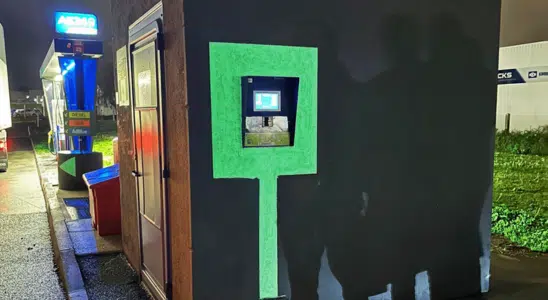LuminoKrom®, street furniture and urban plannign
Luminescent products: assets for urban safety and aesthetics
Would you like to improve the visibility of your city’s signage?
LuminoKrom®, developed by Olikrom company, is a photoluminescent paint technology. It captures natural or artificial light during the day and releases it at night, enhancing visibility in low-light conditions. Our paint can be used on street furniture to improve safety and aesthetics in public spaces.
By applying LuminoKrom® to benches, bollards, barriers and other pieces of equipment, it becomes possible to increase the visibility of infrastructure without the need for external energy sources. This offers advantages in terms of energy savings and sustainable development, while improving safety and the perception of city centers design.
Do you have a specific project in mind? Would you like to know more about concrete applications or technical specifications?
Visibility when street lighting is off
The use of LuminoKrom® on street furniture when street lighting is switched off is a pragmatic choice that combines safety, energy savings, respect for the environment and urbanism. It enables cities to maintain optimum safety levels in the streets without using electricity, while offering a sustainable solution that's simple to implement. It becomes an effective alternative for municipalities wishing to reduce their carbon footprint while preserving the quality of life and safety of their residents.
When street lighting is switched off, spaces in the streets become more dangerous, as pedestrians and cyclists may have difficulty seeing street furniture, obstacles or crossings clearly. LuminoKrom®, which captures light during the day and releases it at night, makes equipments in the streets (seat and table pieces, bollards, barriers, etc.) visible even without street lighting
Applying LuminoKrom® to elements such as kerbs, benches, bollards or barriers can prevent falls or collisions by making these objects visible at night. This is particularly useful in residential areas, parks or poorly lit public spaces.
Types of markings on street furniture
Signage and safety furniture
LuminoKrom®, enhancing safety with sustainable illuminated signs
Hiking and mountain areas
In hiking trails or natural areas where lighting is limited or non-existent, it is essential to make natural obstacles such as rocks visible. Applying LuminoKrom® would enable hikers and cyclists to spot them easily at night, thus avoiding accidents.
Coastal areas and cliffs
Rocky coasts, where the risk of falling is high, can also benefit from luminescent markings to signal dangerous areas at night. Thanks to photoluminescence, these dangerous points in tourist areas are immediately visible at first glance.
Road safety blocks
Boulders or blocks placed at the entrance to cycle paths or pedestrian zones to prevent access by cars or to delimit areas can be covered with LuminoKrom® paint, providing better visibility for users and avoiding collisions with obstacles.
Bridgeheads and piers
Bridgeheads and piers, especially those near waterways, can pose collision hazards. Applying LuminoKrom® would enable sailors, cyclists or motorists to spot these structures from a distance, even in the dead of night.
Pedestrian bridges
Bridge railings and guardrails can also be marked to ensure the safety of pedestrians and other users at night, without the need for electric lighting. The luminescent marking shows the way to safety.
Tunnel entrances and exits
Tunnel entrances and exits may be poorly lit or hidden by structures. Marking bridge heads or pillars with LuminoKrom® luminescent paint makes these entrances visible even in the absence of lighting.
Bridgeheads on roads
For bridges crossing secondary roads or freeways, pillars and bridgeheads can be a hazard to vehicles in poor visibility. By applying LuminoKrom® paint, these obstacles become more visible at night, reducing the risk of accidents.
Railway bridges
Transport infrastructures such as railway bridges, especially in rural or poorly lit areas, can also be equipped with our technology to signal structural elements that are potentially dangerous for users who take the road during the night .
Obstacles in work zones
On construction sites where natural or artificial obstacles are located close to infrastructures, LuminoKrom® can be used to temporarily signal rocks or other obstacles that could cause accidents, especially at night. These points of light warn passers-by.
Photoluminescence, as an asset for vertical signage, combines energy efficiency, increased safety, durability and respect for the environment. Photoluminescence meets the major challenges of night-time visibility, particularly in areas with limited or no street lighting. With a wide range of applications and projects, it helps to enhance safety while minimizing the ecological footprint of infrastructures.
Signage for pedestrians and cyclists
- Pedestrian crossing signs: Signs indicating crosswalks can be made visible with LuminoKrom®, increasing pedestrian safety in areas where lighting is poor or non-existent.
- Signs for bicycle lanes: Signs dedicated to cyclists (prohibitions, obligations, or recommended routes) can benefit from an application of LuminoKrom® for improved legibility at night.
Lire la suite
Signage in tourist areas
- Orientation and route signs: In parks, signs indicating paths, itineraries or information on leisure areas can be covered with photoluminescent paint to make it easier for visitors to find their way around at night.
- Tourist information signs: For nocturnal routes, such as guided tours or walks in natural areas, LuminoKrom® can be used to mark out information signs on heritage or wildlife, enhancing the visitor experience.
Signage in work zones
- Temporary worksite signs: Temporary signs used in construction or roadwork zones can be painted with LuminoKrom® paint to ensure their visibility, even when temporary lighting is limited.
- Diversion signs: When works require detour or temporary route changes, LuminoKrom® can make these signs more visible to motorists and pedestrians at night.
Signage in industrial and logistics zones
- Safety signage: In warehouses, factories or industrial areas where lighting may be reduced at night, LuminoKrom® can be applied to signs indicating emergency exits, fire extinguisher points or evacuation routes.
- Information and instruction signs: Important information, such as safety instructions, prohibitions or specific instructions, can be visible at night thanks to this paint, enhancing safety.
- Emergency exit signs: In environments such as underground parking lots, tunnels or buildings, LuminoKrom® can be used to mark emergency exits, stairways or other escape routes in the event of a power cut.
- Signs to indicate assembly points: Areas where people need to go in the event of an evacuation can be marked with photoluminescent signs, visible from a distance and in the dark.
Réduire
Photoluminescent paint:
versatility and aesthetics for urban design
Adaptation to different environments
Photoluminescence can be used on different types of furniture or vertical signage: road and safety signs, route markings in parks, on infrastructures or in industrial zones. This variety of application areas makes it an unrivalled ally in terms of urbanism.
Harmonious integration
Photoluminescence can be used to make signage more visible at night without distorting its appearance during the day, offering discreet yet effective marking. This respects the aesthetics of cities and natural landscapes, while guaranteeing functional signage and design.
Attractive visual effect
In addition to its practical function, photoluminescence can be used for creative and aesthetic designs, adding a special visual effect to infrastructure and outdoor street furniture. These elements become easily distinguishable and an integral part of local population activity.
The advantages of photoluminescent marking
Enhanced safety in critical environments
- Improved safety: This makes signs and signals visible at night, even in poorly lit or isolated environments, reducing the risk of accidents, whether for pedestrians, cyclists or motorists.
- Signage in the event of power failure: In emergency situations or during power failures, photoluminescence ensures that exit, evacuation or danger signs remain visible. This is particularly crucial in government building, tunnels, underground parking lots or on unlit roads.
- Use in hazardous areas: In industrial environments, warehouses or construction zones, photoluminescence makes it possible to signal hazards or safety instructions, even in low-light conditions.
Durable, reliable marking solution
- Autonomous operation: vertical traffic signs treated with photoluminescent paints become visible in the dark without the need for an external power source. They recharge automatically in daylight or under artificial light sources, and glow at night.
- Cost reduction: By eliminating the need to power traffic signs (street lamps, traffic lights or other luminous devices), photoluminescence offers significant savings in installation and maintenance costs.
- Durability, resistance and low maintenance: Photoluminescent paints are designed to resist weathering, UV rays, humidity and harsh environmental conditions, making them a reliable solution for long-term outdoor applications. Photoluminescent paints can emit light for several hours after exposure to light, ensuring visibility throughout the night.
Environmental sustainability
- Ecological solution: Unlike conventional lighting systems that require a continuous power supply, photoluminescence works with natural or artificial light, without any additional energy consumption. This helps to reduce energy consumption and CO2 emissions.
- No light pollution: Unlike conventional lighting, which contributes to light pollution in cities, photoluminescence doesn't disturb nocturnal ecosystems, as it only produces light where it's needed.
- Respect for nocturnal wildlife: In natural areas or near wildlife habitats, photoluminescence helps to signal obstacles and hazards without disturbing the natural cycles of nocturnal animals.



